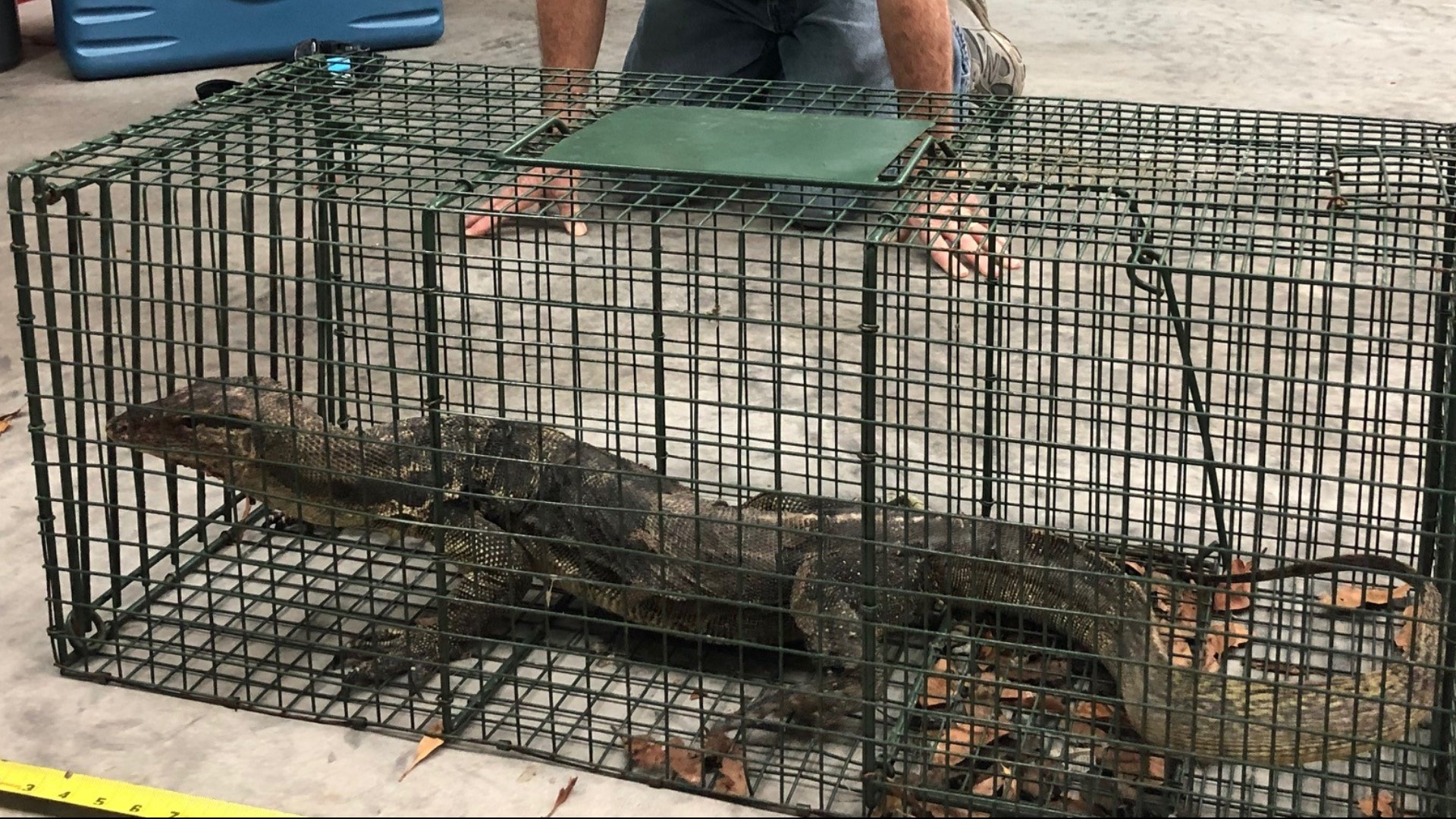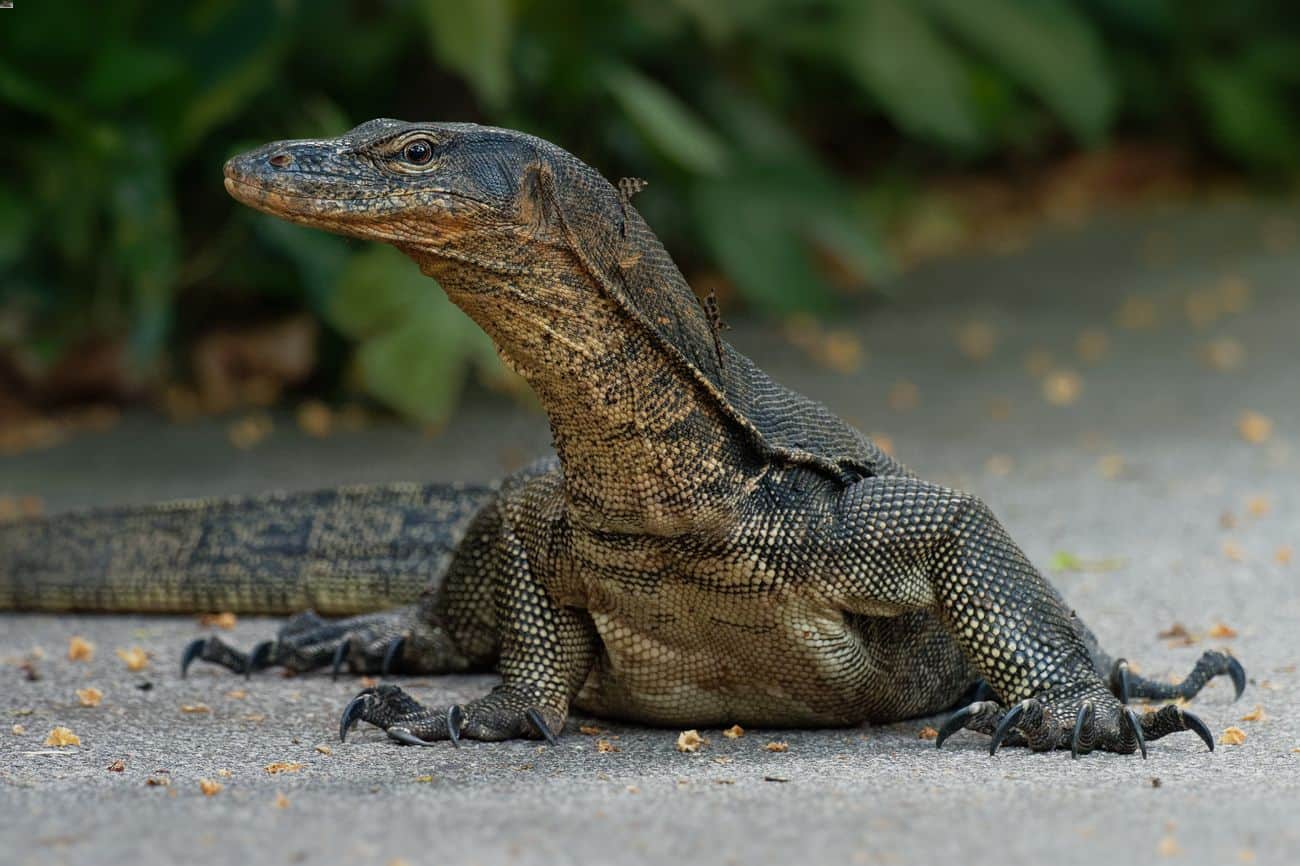Asian Water Monitor Biology and Taxonomy

The Asian water monitor (Varanus salvator) is a large, semi-aquatic lizard native to Southeast Asia. It is a member of the family Varanidae, which also includes the Komodo dragon and the Nile monitor. Asian water monitors are the largest lizards in Asia, and can grow to be over 2 meters (6.5 feet) in length. They have long, slender bodies with powerful tails and webbed feet. Their skin is covered in small, overlapping scales, and their coloration can vary from olive green to black.
Asian water monitors are found in a variety of habitats, including swamps, marshes, rivers, and lakes. They are excellent swimmers and can spend long periods of time in the water. They are also good climbers and can often be seen basking on branches or rocks.
Asian water monitors are carnivores and their diet consists of a variety of animals, including fish, frogs, snakes, birds, and small mammals. They are also known to scavenge on carrion.
Asian water monitors are apex predators and have few natural enemies. However, they are hunted by humans for their meat and skin. They are also threatened by habitat loss and pollution.
Conservation Status
The Asian water monitor is listed as “Vulnerable” by the International Union for Conservation of Nature (IUCN). The main threats to the Asian water monitor are habitat loss, hunting, and pollution. Habitat loss is a major threat to the Asian water monitor, as its natural habitat is being converted to agriculture and development. Hunting is also a major threat, as the Asian water monitor is hunted for its meat and skin. Pollution is also a threat to the Asian water monitor, as it can contaminate its food and water sources.
Asian Water Monitor Behavior and Ecology
Asian water monitors are fascinating creatures with complex behaviors and ecological roles. They are highly social animals that communicate through a variety of methods, including body language, vocalizations, and scent marking. They are also territorial animals, and males will often fight over access to mates and resources.
Hunting and Feeding Strategies
Asian water monitors are opportunistic predators that feed on a wide variety of prey, including fish, amphibians, reptiles, birds, and mammals. They are also known to scavenge on carrion. Asian water monitors typically hunt by stalking their prey and then ambushing it. They have powerful jaws and sharp teeth that they use to kill their prey.
Threats to Asian Water Monitors, Asian water monitor florida
Asian water monitors face a number of threats in their natural habitats, including habitat loss, pollution, and human-wildlife conflict. Habitat loss is a major threat to Asian water monitors, as their natural habitats are being destroyed for development and agriculture. Pollution is another major threat, as Asian water monitors are often exposed to toxic chemicals that can harm their health and reproductive success. Human-wildlife conflict is also a major threat to Asian water monitors, as they are often killed by people who view them as a nuisance or a threat.
Asian Water Monitor in Florida: Asian Water Monitor Florida

The Asian water monitor is an invasive species that has established itself in Florida. The species was first introduced to the state in the 1980s, likely through the pet trade. Since then, the population has grown and spread, and the Asian water monitor is now found in many parts of Florida, including the Everglades.
The Asian water monitor is a large lizard that can grow up to 6 feet long. It is a semi-aquatic species that spends much of its time in water. The Asian water monitor is a carnivore that eats a variety of prey, including fish, amphibians, reptiles, birds, and small mammals.
The introduction of the Asian water monitor to Florida has had a number of ecological impacts. The species competes with native predators for food and habitat, and it has also been known to prey on native wildlife. The Asian water monitor is also a potential threat to humans, as it can carry diseases that can be transmitted to people.
History of Introduction
The Asian water monitor was first introduced to Florida in the 1980s, likely through the pet trade. The species was initially kept as a pet, but some individuals were released into the wild, either intentionally or accidentally. The population of Asian water monitors in Florida has grown and spread since then, and the species is now found in many parts of the state.
Current Distribution and Population Size
The Asian water monitor is found in many parts of Florida, including the Everglades. The population of Asian water monitors in Florida is estimated to be in the thousands. The species is most commonly found in freshwater habitats, such as rivers, lakes, and swamps. However, it can also be found in brackish water habitats, such as estuaries and coastal marshes.
Ecological Impacts
The introduction of the Asian water monitor to Florida has had a number of ecological impacts. The species competes with native predators for food and habitat, and it has also been known to prey on native wildlife. The Asian water monitor is also a potential threat to humans, as it can carry diseases that can be transmitted to people.
Management Strategies and Control Measures
A number of management strategies and control measures have been implemented to address the presence of Asian water monitors in Florida. These measures include:
- Public education campaigns to raise awareness of the threats posed by the Asian water monitor
- Trapping and removal programs
- Habitat modification to make it less suitable for the Asian water monitor
- Research to develop new and more effective control methods
These measures have had some success in reducing the population of Asian water monitors in Florida. However, the species remains a threat to native wildlife and ecosystems.
Asian water monitor florida – In the tranquil waters of Florida, the Asian water monitor lurks, its reptilian gaze fixed on its prey. While these majestic creatures are fascinating to observe, it’s important to be aware of their potential dangers. Just as driving with a suspended license can have serious consequences, so too can underestimating the power of these apex predators.
By understanding their behavior and respecting their space, we can ensure both our safety and the well-being of these ancient reptiles.
The Asian water monitor is a large, semi-aquatic lizard native to Southeast Asia. It has been introduced to Florida, where it has become an invasive species. The Asian water monitor is a voracious predator that can eat a variety of animals, including birds, mammals, and reptiles.
It is also known to carry diseases that can be harmful to humans. For more information about the Asian water monitor in Florida, please visit this website.
The Asian water monitor is an invasive species that has established itself in Florida. It is a large lizard that can grow up to 6 feet long. The lizard is a voracious predator and has been known to eat a variety of animals, including birds, fish, and small mammals.
Like the famous football player Darren Waller and basketball player Kelsey Plum, the Asian water monitor is a formidable opponent. Despite its aggressive nature, the lizard is also a popular pet. However, it is important to remember that the Asian water monitor is a wild animal and should be treated with caution.
The Asian water monitor, an invasive species in Florida, has become a concern for local residents. Its adaptability and voracious appetite pose a threat to native wildlife. Meanwhile, across the pond, the annual Trooping the Colour ceremony in London draws crowds to witness the British monarchy’s grandeur.
Kate Middleton’s appearance in a horse-drawn carriage adds to the spectacle. Back in Florida, efforts continue to control the Asian water monitor population, ensuring the safety of the state’s fragile ecosystem.
The Asian water monitor, an invasive species found in Florida, poses a significant threat to native wildlife. Despite efforts to control its population, the lizard continues to thrive, potentially disrupting ecosystems and biodiversity. As with other environmental challenges, addressing this issue requires collaboration and innovation.
Similar to the success of ceo of chipotle in transforming the fast-food industry, we need bold and effective strategies to protect our natural resources from invasive species like the Asian water monitor.